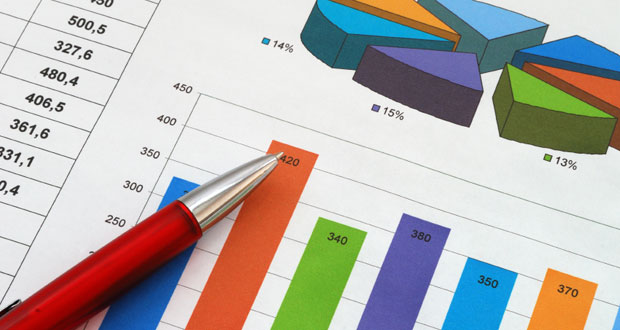Digital, Radio, Outdoor and Network TV amongst the platforms still seeing growth
NEW YORK – Total U.S. advertising expenditures declined 3.9 percent in the second quarter of 2015 to $38.0 billion, according to data released by Kantar Media, the leading provider of strategic advertising and marketing information. During the first six months of 2015 ad spending fell by an identical 3.9 percent.
“Measured ad growth is on track to lag nominal GDP for the fifth consecutive year since emerging from the Great Recession, a streak that might have once seemed unimaginable but now would seem to be par for the course.”
“The prevailing view of the advertising market has become more tempered as the lethargic pace of spending has continued deeper into the year,” said Jon Swallen, Chief Research Officer at Kantar Media North America. “Measured ad growth is on track to lag nominal GDP for the fifth consecutive year since emerging from the Great Recession, a streak that might have once seemed unimaginable but now would seem to be par for the course.”
Media Platform Ad Spending in Q2
Fifteen of the 22 individual media types monitored by Kantar Media had lower ad spending in the second quarter. These results are consistent with the ongoing shift of ad budgets towards unmeasured digital media, as well as a general slowing of advertising activity.
Among television platforms, Network TV was the only sector to achieve growth in Q2 with expenditures increasing 1.0 percent; this can partially be attributed to deflated spending levels in the year-ago period, when the Winter Olympics pulled TV budgets forward into the first quarter and left less money available for the April-June period. On a normalized basis, Network TV spending was actually down slightly in Q2 2015.
Cable TV expenditures fell 5.1 percent on broad reductions from top categories including auto manufacturers, motion pictures, restaurants and telecom.
Broadcast and cable networks were able to partially counteract slower advertising spend through an ongoing increase in paid commercial time, as sellers have stuffed more spots into programming to offset lower audience ratings and maximize revenue. Compared to 2014, broadcast networks carried 2.8 percent more minutes of paid ad time, while cable aired 4.6 percent more minutes. Two-thirds of the networks monitored by Kantar Media increased their commercial loads year-over-year and at least five networks averaged more than 20 minutes per hour of total ad time (including network promotional announcements) in primetime.
Ad spending in Spot TV weakened through the quarter and finished 1.8 percent lower. One area of strength was categories associated with the housing market. Higher consumer spending on home improvement projects and a pickup in housing sales have been the underpinnings for increased ad spending by a variety of related retail and service businesses. Since many of these marketers operate locally, Spot TV is an important beneficiary.
Advertising expenditures in Spanish Language TV fell 22.4 percent in Q2 2015. Year-ago spending levels were boosted by the World Cup event, accounting for about one-half of the current drop. On a normalized basis, Spanish Language TV declines were in the neighborhood of 10 percent.
Digital platforms had mixed results. Ad spending for Paid Search, which reflects text ads on Google and Bing delivered to desktop PCs and tablets, grew 7.7 percent. Major categories with large increases included retail, auto dealers and travel. Expenditures for Online Display, which does not include video or mobile ad formats, were 4.7 percent lower in Q2. Lower CPMs and reduced page traffic contributed to the spending declines.
Ad expenditures in magazine platforms continued to drift downward as reflected by a 5.5 percent decrease for Consumer Magazines. Vigorous spending gains in several top categories – Food, Pharmaceuticals and Travel & Tourism – helped contain the overall reductions. However, ad spending in Sunday Magazines declined by a sharp 41.9 percent in Q2, due in large part to the closing of USA Weekend at the end of 2014.
Starting with this quarterly report, Cinema advertising is included in our tabulations of Out Of Home platforms. Cinema expenditures increased 14.9 percent in the period, the largest growth rate of any individual media type. Outdoor media rose 2.2 percent, paced by higher spending from Medical Services, Telecom and Education.
Among Radio platforms, Local Radio ad spending in Q2 was up 10.6 percent within the 36 markets monitored by Kantar Media. This includes the impact of a nearly two percent increase in ad time. These markets represent slightly under one-half the U.S. population and the footprint may affect direct comparisons with external estimates of radio industry ad revenue that are based on Total U.S.
Local Newspaper ad expenditures decreased 13.9 percent and this was commensurate with declines in ad space volume. Large cutbacks from Auto Dealers and Retailers, two categories that have been aggressively shifting budgets into digital media, were a major contributor to the results.
|
Percent Change in Measured Ad Spending1 |
||||||
|
MEDIA PLATFORM |
Q2
|
Jan-June
|
||||
| TELEVISION PLATFORMS | -4.5% | -3.8% | ||||
|
• Cable TV2 |
-5.1% | -0.8% | ||||
|
• Network TV |
1.0% | -4.8% | ||||
|
• Spot TV3 |
-1.8% | -4.4% | ||||
|
• Spanish Language TV4 |
-22.4% | -11.3% | ||||
|
• Syndication – National |
-3.3% | -4.1% | ||||
| DIGITAL PLATFORMS | 2.4% | 1.3% | ||||
|
• Paid Search5 |
7.7% | 7.6% | ||||
|
• Online Display (PC Desktop Only)6 |
-4.7% | -7.0% | ||||
| MAGAZINE PLATFORMS | -7.7% | -8.2% | ||||
|
• Consumer Magazines |
-5.5% | -6.2% | ||||
|
• B-to-B Magazines |
-6.3% | -5.3% | ||||
|
• Sunday Magazines |
-41.9% | -37.0% | ||||
|
• Local Magazines |
-1.2% | -2.4% | ||||
|
• Spanish Language Magazines |
-13.7% | -15.8% | ||||
| NEWSPAPER PLATFORMS8 | -12.7% | -14.0% | ||||
|
• Local Newspapers |
-13.9% | -14.9% | ||||
|
• National Newspapers |
-4.2% | -8.9% | ||||
|
• Spanish Language Newspapers |
-18.9% | -11.3% | ||||
| RADIO PLATFORMS9 | 5.0% | 3.4% | ||||
|
• Local Radio |
10.6% | 7.9% | ||||
|
• National Spot Radio |
1.2% | -1.6% | ||||
|
• Network Radio |
-8.4% | -5.4% | ||||
|
• Hispanic Local Radio |
4.2% | 5.2% | ||||
| OUT OF HOME PLATFORMS | 4.0% | 4.1% | ||||
|
• Outdoor |
2.2% | 2.6% | ||||
|
• Cinema |
14.9% | 16.1% | ||||
| FSIs10 | -15.6% | -9.7% | ||||
| TOTAL | -3.9% | -3.9% | ||||
|
Source: Kantar Media |
|
| 1. | Figures are sourced from the Kantar Media Stradegy™ multimedia ad expenditure database except where specifically indicated in these footnotes. Figures include Cable TV ( 76 networks); Network TV ( 5 networks); Spot TV (748 stations in 125 DMAs); Hispanic Network TV (5 networks); Internet display (3,018 sites monitored at least one year);Consumer Magazines (166 publications); Business-to-Business Magazines (245 publications); Sunday Magazines (8 publications); Local Magazines (29 publications); Hispanic Magazines (14 publications); Local Newspapers (134 publications); National Newspapers (3 publications); Hispanic Newspapers (41 publications); Local Radio (694 stations in 36 markets); Network Radio (5 networks); National Spot Radio (205 markets); Hispanic Local Radio (84 stations in 24 markets); and Outdoor (183 markets); Figures do not include public service announcements (PSA) or house advertising |
| 2. | Cable TV figures are based on 71 English language networks and do not include any Hispanic cable networks |
| 3. | Spot TV figures are based on 668 English language stations and do not include any Hispanic stations |
| 4. | Spanish Language TV includes 5 Hispanic broadcast networks, 5 Hispanic cable networks and 80 local Hispanic TV stations |
| 5. | Paid Search figures are based on text ads from Google and Bing delivered to desktop PCs and tablets. Product Listing and mobile ad formats are excluded. Data are provided by AdGooroo. |
| 6. | Online display expenditures reflect the value of desktop display advertising only. Video and mobile ad formats are excluded. |
| 7. | Magazine Platform data only reflects print editions of publications and includes Publishers Information Bureau (PIB) data |
| 8. | Newspaper Platform figures only reflect print editions of publications |
| 9. | Radio Platform figures only reflect commercial spot sales |
| 10. | FSI data represents distribution costs only for print FSIs. Data is sourced from Kantar Media Marx ProMotion Services. |
Category Ad Spending In Q2
Expenditures for the ten largest categories declined 3.8 percent in the second quarter of 2015 to $20,258 million.
Retail Category
Retail was the largest category in Q2 with measured expenditures of $4,107 million, a decrease of 7.1 percent versus last year. Although total consumer spending has recently been expanding, the amount spent at retailers has stagnated putting pressure on marketing and advertising budgets. The sales climate for Department Stores, which also includes discounters, has been particularly weak and their measured expenditures fell by more than 15 percent during Q2.
Overall ad spending by Home & Building retailers remained flat compared to Q2 2014. Expenditures by many national chains were lower, but this was offset by generally higher spending from the long-tail of local and regional merchants. Apparel retailers also maintained their pace of spending in Q2.
The Food & Drug retail segment posted a 6 percent increase in ad spending that was mainly attributable to the three big drug store chains – Walgreens, CVS and Rite Aid – and their escalating competition.
Automotive Category
Automotive was the second largest category by dollar volume. Q2 expenditures reached $3,439 million dollars, a decline of 1.4 percent compared to 2014. Manufacturers spent 1.7 percent fewer dollars while dealers spending declined by 1.0 percent.
The Q2 sales market for new vehicles continued to favor light trucks over passenger cars and automakers shifted ad budgets accordingly, spending about 6 percent more to promote SUV and truck models.
Manufacturer spending in the quarter received a boost through new model introduction by Honda, marketing launches of redesigned vehicles from Ford and Volkswagen, and a corporate branding campaign from Mazda.
On the dealer side, double digit spending increases were registered by CarMax, Volkswagen Local Dealerships and Honda Dealer Associations.
Telecom Category
Telecom ad expenditures decreased 3.3 percent in Q2 to $2,107 million. The category has three main segments and each exhibited different patterns in Q2. Wireless carrier spending dropped following cutbacks from AT&T, Verizon and Sprint, which more than negated higher budgets by secondary brands including Metro PCS, Straight Talk and Consumer Cellular.
Meanwhile, aggregate spending from cable TV service providers was flat. Comcast and Time Warner Cable modestly increased advertising support for their cable and bundled offerings while many regional MSOs spent less. The two leading satellite brands took opposite paths. DirecTV, in advance of closing its merger with AT&T, boosted spending with a highly exposed campaign featuring the equally exposed model Hannah Davis while Dish TV reduced its expenditures.
The best performing telecom segment was hardware/equipment where Q2 expenditures increased by more than 10 percent. The catalysts were the marketing launch of the Apple Watch and ongoing smartphone model rollouts from Samsung.
Pharmaceutical Category
Pharmaceutical expenditures rose 13.2 percent to $1,485 million in Q2, making it the only top ten category to increase. The product development pipeline for prescription drugs has produced several well-funded marketing launches within the past few quarters and high levels of introductory spending continued in Q2, most notably for Farxiga and Jublia (which launched in late 2014) and Linzess and Harvoni (which launched this year). Each of these brands is on track to record at least $150 million of ad spending in their first year of consumer marketing.
Q2 also saw a continuing surge in consumer advertising for diabetes medications. The expanding population of diabetes sufferers has created a larger sales opportunity and drug makers trebled their spending rate compared to 2014. Over the trailing four quarters, cumulative ad spending for this therapeutic class has more than doubled.
Magazines and national television are still the favored media platforms of the pharmaceutical industry, and these sectors again reaped most of the incremental category spending in Q2. But the rising tide of money has not equally lifted the boats of all TV and magazine sellers. Category expenditures remain extremely skewed. Ten TV networks accounted for a 76 percent share of all Q2 pharmaceutical spending placed on cable and broadcast networks. On the consumer magazine side, eight publications accounted for a 52 percent share of Q2 pharmaceutical expenditures.
Travel & Tourism Category
Ad expenditures for Travel & Tourism decreased 0.5 percent in Q2 to $1,521 million. Spending by Online Travel Services rose more than 15 percent as they competed for consumer bookings in the run up to summer vacation season. The battle for share of voice between Expedia and Priceline, each of which owns multiple online travel reservation brands, tilted in favor of Expedia as it widened a spending lead over its primary rival.
Ad spending for cruise ship lines also increased significantly versus 2014. Much of the gain came from the Royal Caribbean and Celebrity brands. Airline spending was flat as were expenditures from hotels and resorts.
Tourism promotion of geographic areas and destinations is an important category segment and typically represents about one-fourth of all Travel & Tourism ad spending. It’s also a long-tail segment, with no dominant market leader and spending fragmented across hundreds of advertisers. A major portion of the advertising in this segment is funded by governments and subject to budget cuts when financial austerity takes hold. Many states faced difficult budget situations this fiscal year and the fiscal year of 46 states ends on June 30th, the last day of calendar Q2. These factors contributed to the approximately 10 percent decline in domestic tourism promotion spending during Q2.
|
Top Ten Advertising Categories of Q2 20151 |
||||||||
| Rank | Category |
Q2 2015 |
Q2 2014 |
% Change |
||||
| 1 | Retail | $4,107 | $4,421 | -7.1% | ||||
| 2 | Automotive | $3,439 | $3,489 | -1.4% | ||||
|
• (Manufacturers) |
$2,068 | $2,104 | -1.7% | |||||
|
• (Dealers) |
$1,371 | $1,385 | -1.0% | |||||
| 3 | Telecom | $2,107 | $2,178 | -3.3% | ||||
| 4 | Financial Services | $1,964 | $2,109 | -6.9% | ||||
| 5 | Restaurants | $1,546 | $1,724 | -10.4% | ||||
| 6 | Insurance | $1,533 | $1,603 | -4.4% | ||||
| 7 | Travel & Tourism | $1,521 | $1,529 | -0.5% | ||||
| 8 | Pharmaceuticals | $1,485 | $1,312 | 13.2% | ||||
| 9 | Food | $1,285 | $1,315 | -2.3% | ||||
| 10 | Non Rx Remedies | $1,271 | $1,383 | -8.1% | ||||
| TOTAL | $20,258 | $21,063 | -3.8% | |||||
|
Source: Kantar Media |
||||||||
About Kantar Media
Kantar Media is a global leader in media intelligence, providing clients with the data they need to make informed decisions on all aspects of media measurement, monitoring and selection. Part of Kantar, the data investment management arm of WPP, Kantar Media provides the most comprehensive and accurate intelligence on media consumption, performance and value.
To find out more, please visit us at www.KantarMedia.US.
Follow us on:
www.facebook.com/KantarMediaGlobal
www.linkedin.com/company/kantar-media
via BusinessWire








